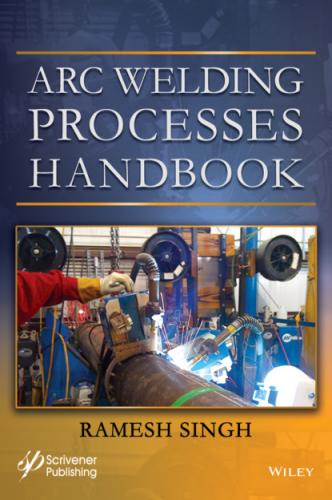Table 1.5 Arc efficiency factor.
| Welding process | Arc efficiency factor η | |
| Range | Mean | |
| Submerged Arc Welding | 0.91 - 0.99 | 0.95 |
| Shielded Metal Arc Welding | 0.66 - 0.85 | 0.80 |
| Gas Metal Arc Welding (CO2 Steel) | 0.75 - 0.93 | 0.85 |
| Gas Metal Arc Welding (Ar Steel) | 0.66 - 0.70 | 0.70 |
| Gas Tungsten Arc Welding (Ar Steel) | 0.25 - 0.75 | 0.40 |
| Gas Tungsten Arc Welding (Ar Aluminum) | 0.22 - 0.46 | 0.40 |
| Gas Tungsten Arc Welding (He Aluminum) | 0.55 - 0.80 | 0.60 |
Essential variables are those in which a change, as described in the specific variables, is considered to affect the mechanical properties of the weldments, hence any change shall require requalification of the welding procedure. The Supplementary essential variables are required for metals for which other Sections specify notch-toughness tests and are in addition to the essential variables for each welding process.
The Nonessential variables on the other hand are those in which a change, as described in the specific variables, may be made in the WPS without requalification.
Some special process like corrosion-resistant and hard-surfacing weld metal overlays may have different additional essential variables. Only the variables specified for special processes shall apply. A change in the corrosion-resistant or hard-surfacing welding process requires requalification.
The correct electrode diameter is one on of the variables, when used with the proper amperage and travel speed, produces a weld of the required size in the least amount of time. Selection depends on the thickness of the material being welded, the position of welding in relation to the gravity of the earth, and the type of joint to be welded. The welder’s experience is also important since more skill is required to control the weld puddle in out of position welds, the different types of electrode coverings and fluxes, are important too. The inexperience may lead to poor quality welds that may have defects such as inclusions, porosities in the final welds.
Welding current can be either direct or alternating, depending on the process, type of electrode and available power supply and material being welded. DC provides a steadier arc and smoother transfer as well as good wetting action, and out of position control. Reverse and straight current polarities are used for specific applications. Reverse polarity produces
